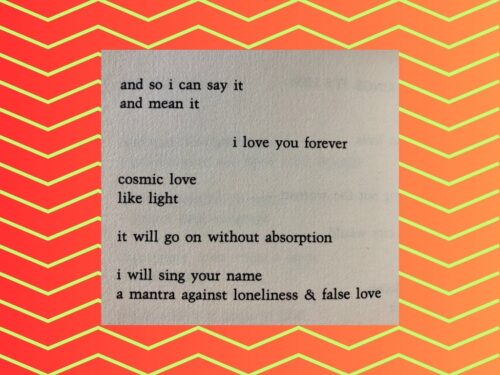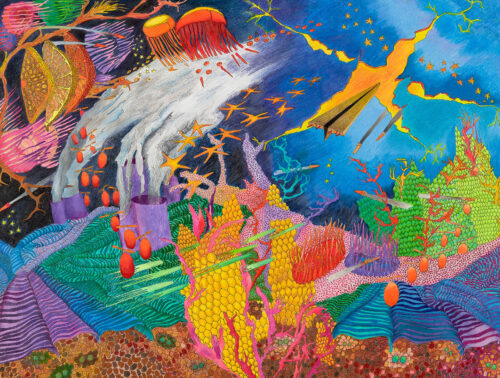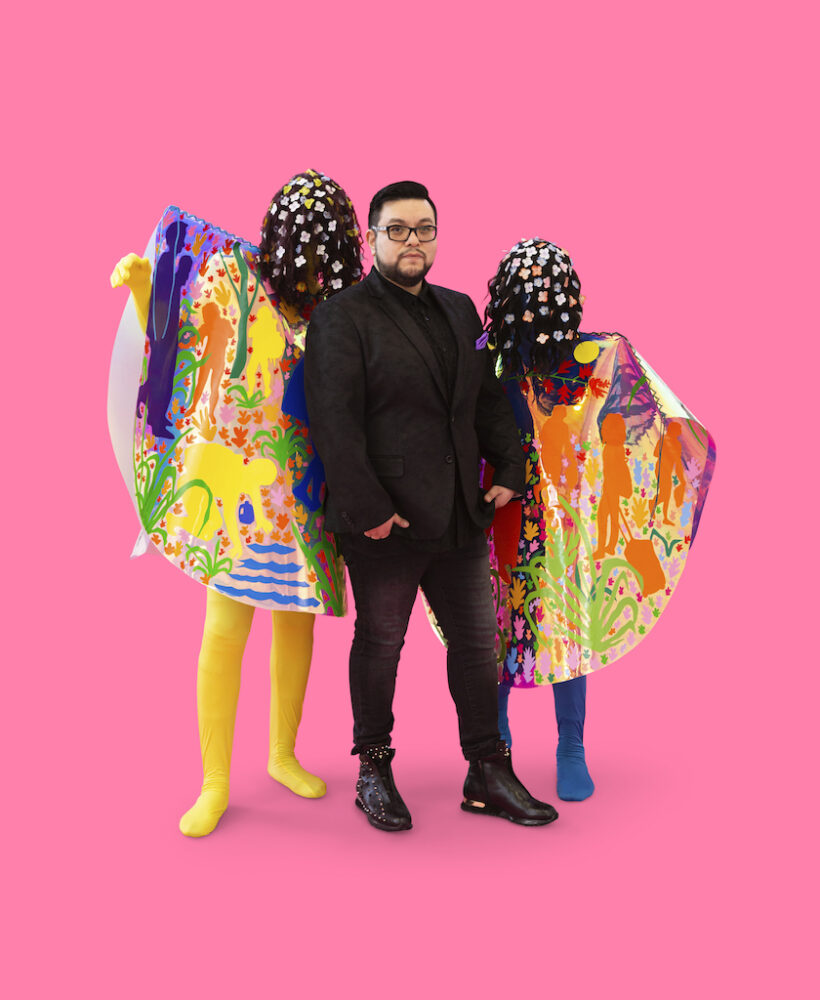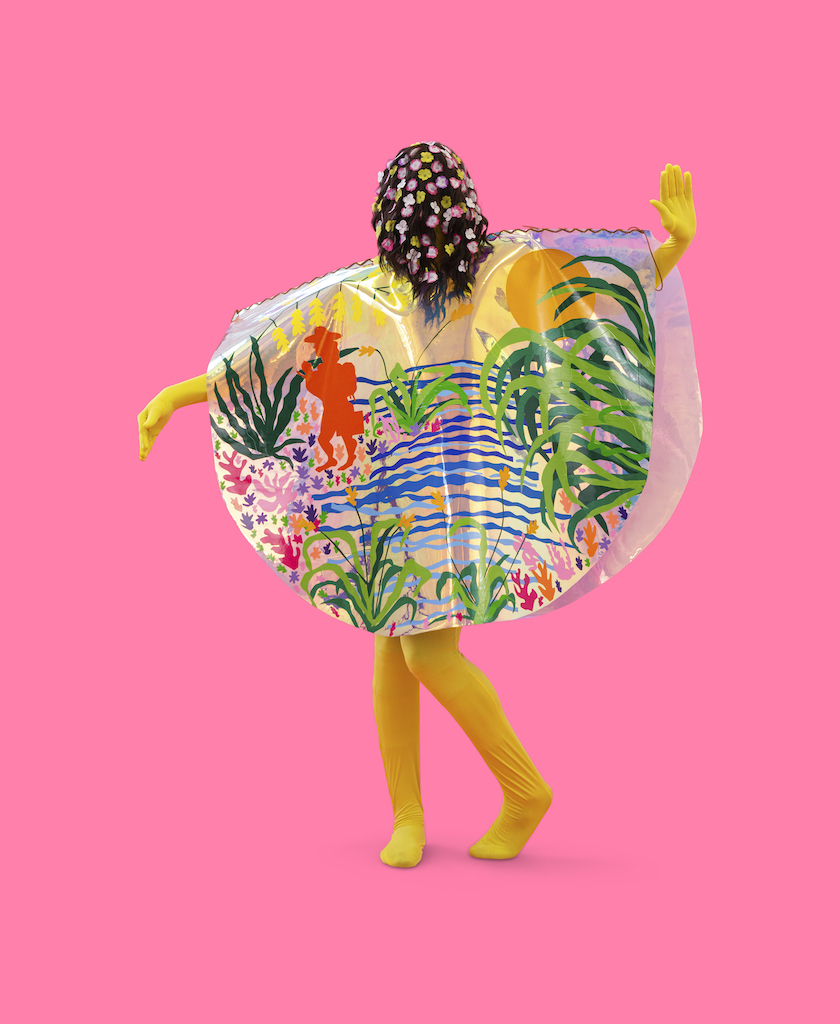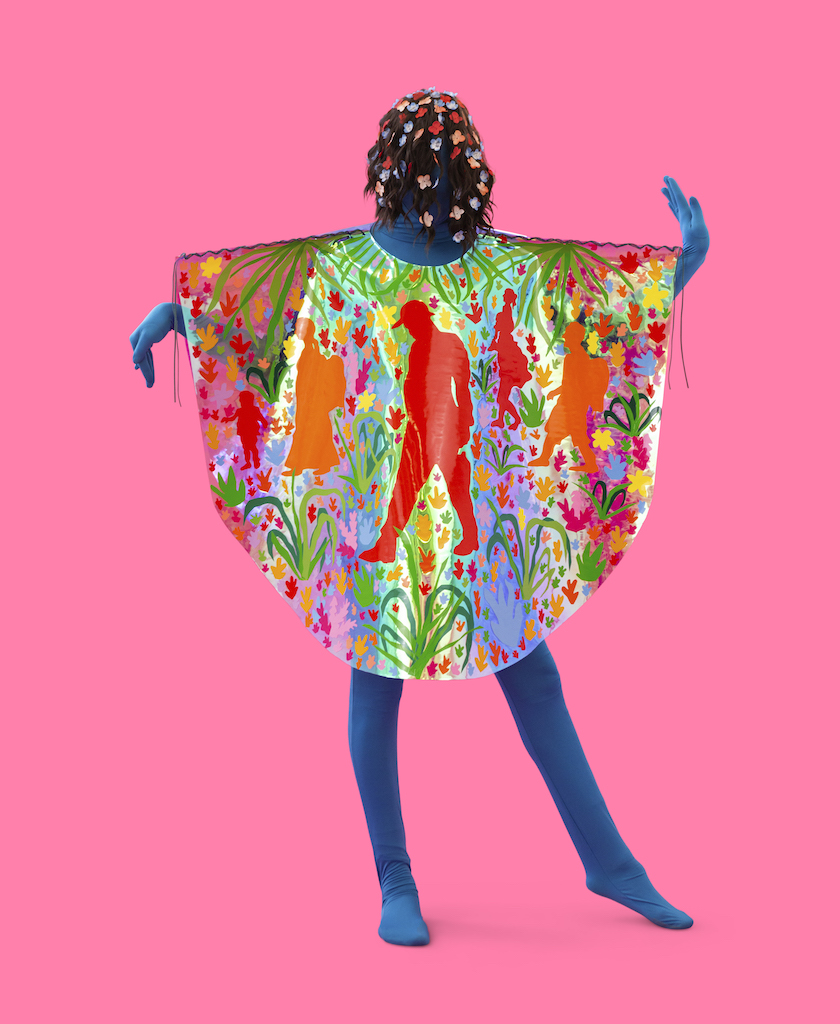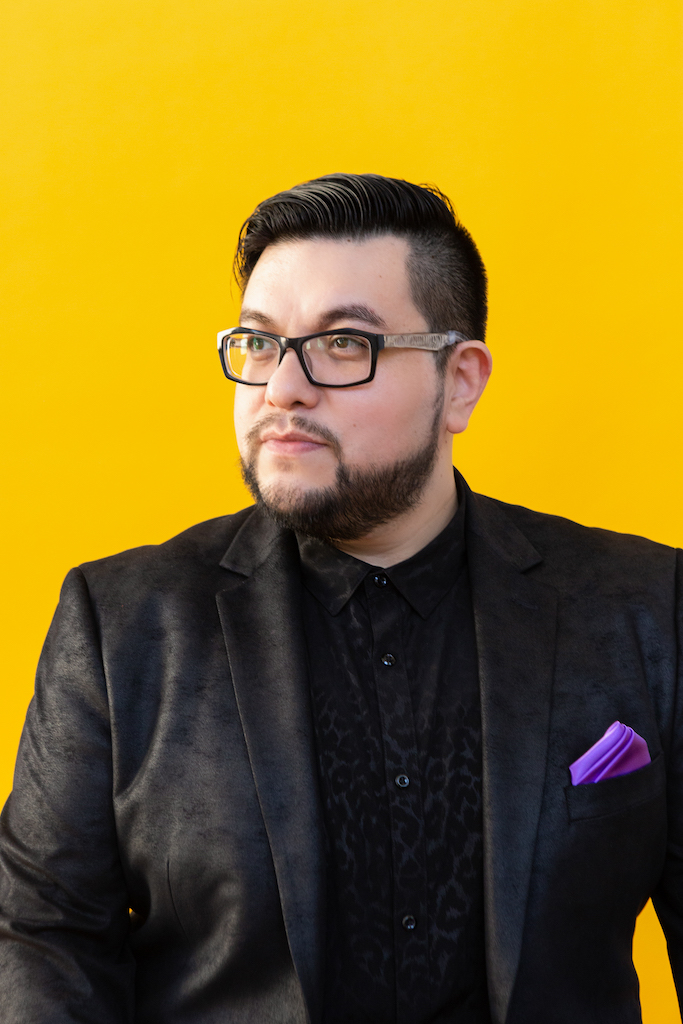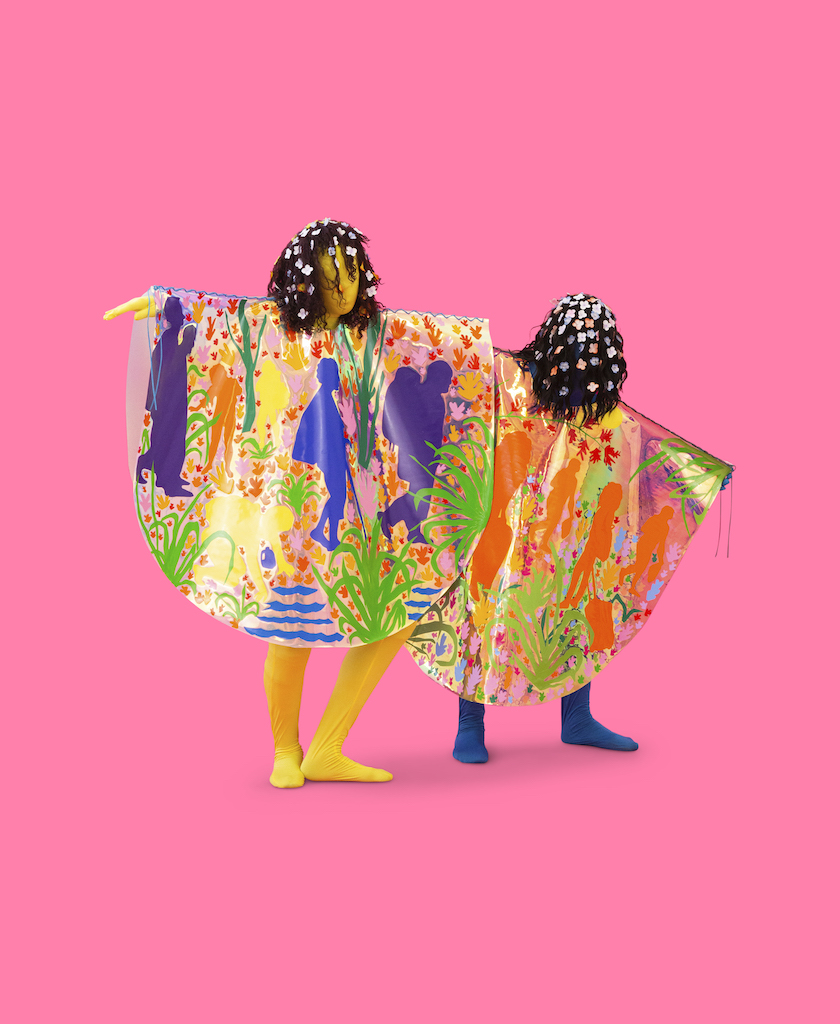In fabric and vinyl, artist Hoesy Corona tells the story of his family’s journey to the United States from Mexico as well as the broader challenges posed by the environmental racism immigrants face in 2023.
Depicted in changing landscapes reacting to the climate crisis, the figures in Corona’s fiber-based works are at once specific and vague. A suitcase might be decorated in a cherry pattern but the face and features of the person pulling it are obscured by cascading hair. Corona’s vibrant work is often wearable. He has made full costumes, ponchos, and blankets meant to be worn in performance and also displayed in gallery settings. As a result, his solo installations have the dramatic tension of a stage set for the curtain to rise at any moment.
In 2023, Corona is an artist in constant motion. He moved to Baltimore over eighteen years ago to attend Maryland Institute College of Art (MICA) for an undergraduate degree in painting and participated in the thriving DIY arts period the city enjoyed in the 2010s. A fixture of the CopyCat building’s monthly happenings, Corona cut his teeth producing solo and collaborative performances with Ada Pinkston as co-director of Labbodies (2014- 2020), the now-defunct performance collective the two artists established to highlight underrepresented and queer artists of the region.
